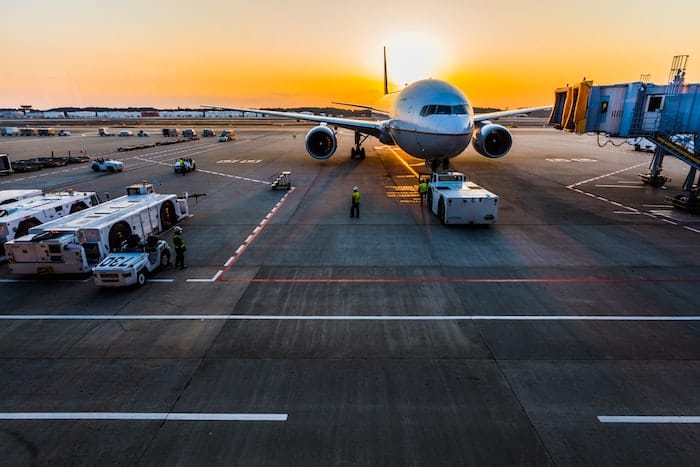Reducing Coronavirus Transmission Helps Our Communities
by Betsy Burton
I have been speaking with several young and middle-aged people who have said that they aren’t really focused on news and updates of COVID-19, or on changing their habits, because they are “healthy and not likely to get impacted by symptoms.” Equally, I have heard from some older individuals that they are at risk from lots of things, so “this is just another risk.”
On the one hand, these are very understandable reactions, particularly in light of confusing and conflicting messages from government and social networking sources (see our blog on social media vs. government sources during the coronavirus).
On the other hand, this reasoning misses or ignores the ripple effect of the virus on our communities, regardless of the impact on any one individual.

Staying home when we feel sick and reducing unnecessary travel are two ways to keep our communities safe during the coronavirus outbreak.
Look at the Math
The spread of the virus has been explained as a bell curve, and the key is to flatten that curve as much as possible.
The logical side of me considers the impact of the virus as a basic equation, including variables and constants:
- Percentage of people that are infected by COVID-19 = X
- Percentage of people that will get some symptoms or significant symptoms = Y
- Percentage of people infected that could die = Z
I am not making projections, nor am I the source of data for this analysis. In fact, I think each of us must use official and scientific data for this equation.
My point is that by using simple scenario planning, we can see how each of us can have an impact on reducing the effects of COVID-19.
One Example Scenario
Just consider one scenario to illustrate the equation:
- If we consider the population of the US at 327 million and estimate that 5% of the population gets infected by COVID-19, then that would be 16.35 million.
- The CDC estimates(1) that 15-20% of the infected population could have some to significant symptoms. In this scenario, that would be 2.4 million (picking the more conservative 15%).
- The WHO estimates that the mortality rate could be 2-4%(2) of those who are infected. In this scenario, that would be 327,000 (picking the more conservative 2%).
This scenario assumes that the symptoms and mortality rate statistics from the CDC coronavirus data and the WHO data are relatively constant based on data from other regions, including China.
The one variable that we can all influence together is to reduce the number of people infected in the first place.
Where to Start? Reduce Exposure to the Virus
There are a number of factors that could increase or decrease coronavirus transmission, such as the availability of coronavirus diagnosis, medical resources including hospitals, staff, and assets to treat those who get sick, availability of drugs to combat the virus, and potential environmental factors.
However, if we leave those symptom and mortality rates as conservative estimates, just beginning by reducing the number of people exposed to coronavirus contagion can have a significant impact on the number of people who develop symptoms and the potential mortality of the virus.
For example, consider these four scenarios with a US population of 327 million.
| A | B | C | D | |
| % infected by COVID-19 | 5% | 10% | 20% | 30% |
| Impact on US pop. | 16,350,000 | 32,700,000 | 65,400,000 | 98,100,000 |
| Symptom rate | 15% | 15% | 15% | 15% |
| Impact on US pop. | 2,452,500 | 4,905,000 | 9,810,000 | 14,715,000 |
| Mortality rate | 2% | 2% | 2% | 2% |
| Impact on US pop. | 327,000 | 654,000 | 1,308,000 | 1,962,000 |
If each one of us can help reduce the number of people that get sick in the first place, we can potentially reduce the entire lifecycle of the virus. This means being careful by washing our hands, not gathering in large crowds, monitoring our own health, and staying home if we feel sick or may have been exposed.
Bottom Line
Each one of us is responsible for and can have an impact on the infection rate of COVID-19, as well as other infectious diseases. In turn, our efforts can reduce the symptom and mortality rate. In other words, we can save people.
As I mentioned in a previous blog, we should have been practicing many of these preventative techniques for years. But we tend to let our guard down and forget until an unknown and harmful disease like the coronavirus starts spreading.
It is understandable that some might downplay the impact of the virus because they are healthy, young, or above concern themselves. However, this is a time when we must recognize that we live in a community and are, therefore, part of a global human experience that is beyond ourselves. Without a human coronavirus vaccine and limited coronavirus treatment, it is important to do our part as citizens to reduce the causes of infection. We must consider how each of us can have an impact on the most vulnerable populations.
Footnotes:
1) Reports out of China that looked at more than 70,000 COVID-19 patients found that about 80% of those who had the illness had mild symptoms and recovered. 15-20% developed serious illness.
2) “Globally, about 3.4% of reported COVID-19 cases have died,” WHO Director-General Tedros Adhanom Ghebreyesus said during a press briefing at the agency’s headquarters in Geneva.
Editor’s Note: Check out Aragon’s advice for employees working from home during the coronavirus.

Have a Comment on this?